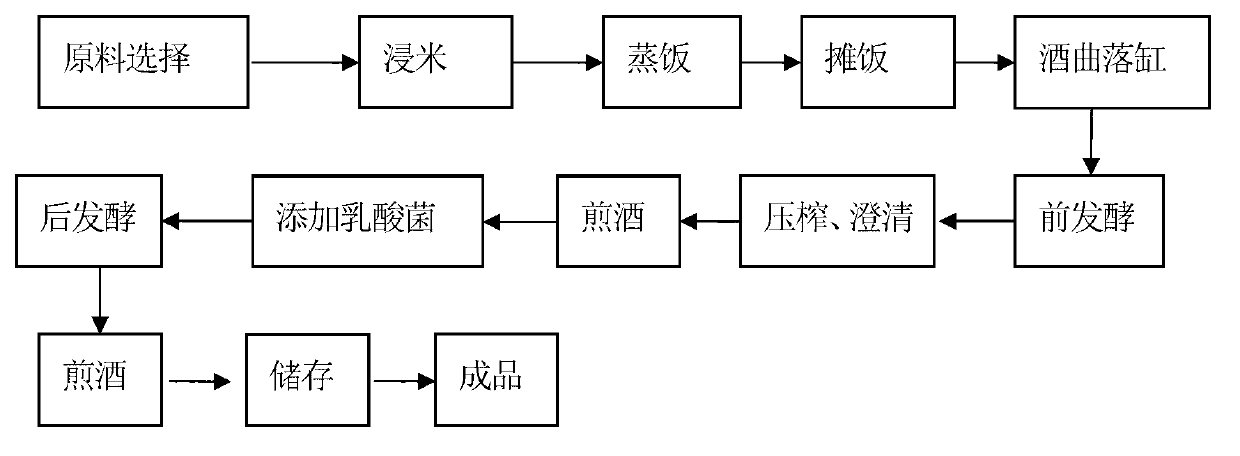Method for producing millet wine by using lactobacillus fementation
A technology of lactic acid bacteria fermentation and lactic acid bacteria, which is applied in the field of rice wine production, can solve problems such as unfavorable taste, damage to the flavor of finished wine, and adverse effects on flavor, and achieve the effects of increasing or improving flavor, avoiding the reduction of wine yield, and unique and excellent flavor
- Summary
- Abstract
- Description
- Claims
- Application Information
AI Technical Summary
Problems solved by technology
Method used
Image
Examples
Embodiment 1
[0025] Such as figure 2 As shown, in the present embodiment, the method for producing yellow rice wine by lactic acid bacteria fermentation comprises the steps:
[0026] 1. Raw material selection
[0027] Choose glutinous rice with high starch content and low protein and fat content to achieve the purpose of producing more wine, aroma of wine, less miscellaneous taste and stable wine quality. The endosperm has a loose structure, absorbs water quickly and less, and has a small volume expansion. The proportion of amylopectin in starch granules is high, which is easy to cook, gelatinize and saccharify and ferment, so that more wine is produced, less dross, more oligosaccharides remain in the wine, and the taste is mellow.
[0028] 2. Soak rice
[0029] Soak at room temperature for about a day, and remove chaff, dust and other impurities attached to the surface of the rice grains by washing the rice.
[0030] 3. Steamed rice
[0031] When steaming, the rice should be steamed...
Embodiment 2
[0048] see image 3 , different from Example 1, in the method of this example, there is no step of decocting wine after pre-fermentation and before post-fermentation, and the rest of the steps are the same as in Example 1, and will not be repeated here.
[0049] In this example, there is no decoction step after the pre-fermentation and before the post-fermentation, but malic acid is added before the post-fermentation to reduce the pH of the wine to below 3.5 and reduce the alcohol content, and it is still in the post-fermentation to a certain extent Fermentation is terminated by decoction.
Embodiment 3
[0051] see Figure 4 , the difference from Example 1 is that in this example, decocting wine is not used to terminate the post-fermentation fermentation, but the bacteriostatic agents such as nisin are directly added to the wine liquid to inhibit the activity of lactic acid bacteria. to the effect of terminating the fermentation; all the other steps are the same as in Example 1, and will not be repeated here.
PUM
 Login to View More
Login to View More Abstract
Description
Claims
Application Information
 Login to View More
Login to View More - Generate Ideas
- Intellectual Property
- Life Sciences
- Materials
- Tech Scout
- Unparalleled Data Quality
- Higher Quality Content
- 60% Fewer Hallucinations
Browse by: Latest US Patents, China's latest patents, Technical Efficacy Thesaurus, Application Domain, Technology Topic, Popular Technical Reports.
© 2025 PatSnap. All rights reserved.Legal|Privacy policy|Modern Slavery Act Transparency Statement|Sitemap|About US| Contact US: help@patsnap.com



